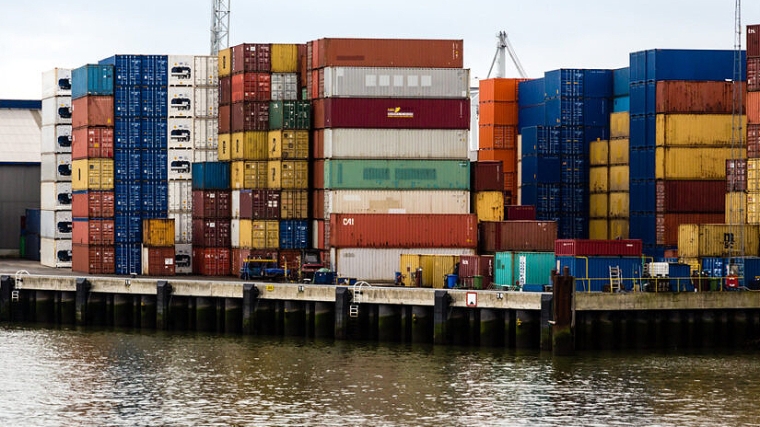
What we export as a nation shapes us considerably. It influences the skills we develop, how the countryside looks, and how other countries view us. Our exports also shape our regions, with a typical Waikato scenery of rolling dairy country, Marlborough’s endless rows of grapes, and the Bay of Plenty with its tangled kiwifruit vines. We should then be very aware of what produce comes from each part of the country, as it not only shapes the local economy it shapes the entire landscape.
Exports provided resilience to NZ economy in 2020
Exports of goods have also been a stable rock in New Zealand’s resilience to COVID-19. Although GDP contracted by 2.9% in 2020 as a result of lockdown, goods exports only declined by 1.0%. Certain exports even grew in 2020, such as fruit and wine, as our overseas customers did all they could to make life more comfortable at home. Recent growth in commodity prices is also providing a much-enjoyed boost. But it’s easy to get caught up in what’s happening now and forget about the greater trends at play.
Growth in the districts and their commodities
Looking at growth of goods exports at a district level can help understand export trends across the country. Our regional export model highlights the hotspots of New Zealand’s export growth. The map below shows that the central and eastern coast areas of the North Island are many of the standout areas, with Marlborough, Tasman, and parts of Canterbury stick out as hot spots of the South Island.
Recent growth in fruit, forestry, and wine exports has benefited exports from many of these areas. The rise of our dairy industry over the past decade has also helped boost exports in the central North Island and parts of Canterbury. Waimate District saw the largest growth in goods export value between 2010 and 2019 due to the opening of a Fonterra plant near Waimate which increased dairy production outputs.
Not every district has grown, with Map 1 also pointing out areas of contraction, such as mining on the West Coast, or oil and gas in Taranaki.
What about the next decade?
As a general rule, the big cities have not seen the same level of growth in goods exports compared with rural areas. This trend is expected as the cities are more built towards being service providers, rather than commodity growers. Looking ahead though, this trend may change. As we reach a limit on how much value our goods exports can achieve through selling commodities, producing further up the value chain will be a way of boosting export values.
Different drivers of further growth in exports
Undoubtedly there is still room for further grow in our commodity exports as well but is unlikely to mirror what has happened over the past decade. Environmental regulation is likely to limit the ability for dairy products to grow at the same pace, particularly for lower value commodities like milk powder. Our new Export Market Finder model also identifies more opportunity for exports on the demand side for products such as wine, aquaculture, and processed food and wood products. This focus on products is in contrast to the basic commodities we currently specialise in.
The growth of our exports in recent years is closely linked to commodity prices: when log prices are good the forestry sector harvests more and does well; when dairy prices are high, Fonterra’s farmgate milk price rewards farmers, and so on. This link to commodity prices reflects reality but also raises questions of resilience. Ensuring a focus on higher quality and product differentiation means New Zealand producers are less at the whims of international commodity prices. It’s unrealistic for New Zealand to shift away from a primary sector-based economy anytime soon, but transitioning up the value chain in the primary sector is not.
Andrew Beattie is an economist at Infometrics. This article was first posted at Infometrics. It is re-posted here with permission.

We welcome your comments below. If you are not already registered, please register to comment.
Remember we welcome robust, respectful and insightful debate. We don't welcome abusive or defamatory comments and will de-register those repeatedly making such comments. Our current comment policy is here.